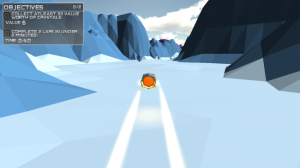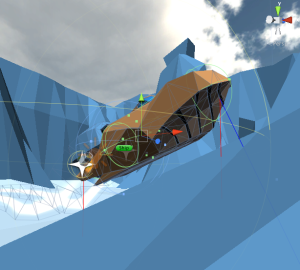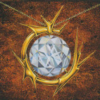Smuggling and hovercrafts? This could be a thing
November 9th, 2014
 About a month ago, we began working on a prototype of a hovercraft racing game. Our idea was to do something totally different with the racing genre — we love all the intensity and excitement of high-speed driving, but we wanted a more compelling reason to do it. Driving around on circular tracks for the sole purpose of becoming the race-car champion just isn’t that interesting to us anymore.
About a month ago, we began working on a prototype of a hovercraft racing game. Our idea was to do something totally different with the racing genre — we love all the intensity and excitement of high-speed driving, but we wanted a more compelling reason to do it. Driving around on circular tracks for the sole purpose of becoming the race-car champion just isn’t that interesting to us anymore.
We decided early on that we wanted to use procedurally generated tracks made up of modular track pieces, the idea being that we can design micro player experiences that will be stitched together randomly for a completely unique set of tracks for every player.
The first battle we had to face, however, was not track generation, but basic hovercraft physics. Hovercrafts are hard to program! While we were looking for inspiration and reference, we also discovered that good examples of hovercrafts in games are relatively few and far between. We’ve been lucky enough to have a small group of game dev friends willing to play our early prototypes and give us feedback to help us get it right. We’ve gone through several iterations of the craft physics, and we’re finally getting it to where we want it.
 Hovering mechanics are complicated because there’s a lot to account for; hovercrafts are not real things (unfortunately), so we have to make up a lot of physics that isn’t actually real. We have to closely balance things like momentum and drag, turning force, and velocity, all while monitoring the craft’s relationship with the ground. Check out this unity editor image of the ship – you can see we’re using several raycasts and colliders so that we can appropriately react to terrain and environment.
Hovering mechanics are complicated because there’s a lot to account for; hovercrafts are not real things (unfortunately), so we have to make up a lot of physics that isn’t actually real. We have to closely balance things like momentum and drag, turning force, and velocity, all while monitoring the craft’s relationship with the ground. Check out this unity editor image of the ship – you can see we’re using several raycasts and colliders so that we can appropriately react to terrain and environment.
The feel isn’t perfect yet, but we’re getting there. We’re excited to get some solid controls in and start working on our procedural generator.
